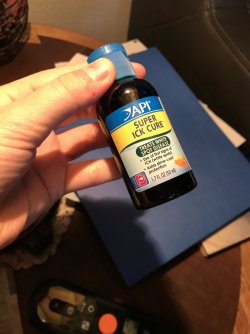@Naughts covered it pretty well.
You can either use chemicals to treat fish for white spot, or you can use heat. If the fish are tropical, then heat is the safest option. You simply raise the water temperature to 30C (86F) and keep it there for a couple of weeks, or at least 1 week after all the white spots have gone.
Before you raise the temperature, do a huge (80-90%) water change and gravel clean the substrate. This removes most of the parasites in the water and gravel.
Make sure any new water is free of chlorine/ chloramine before it's added to the tank.
You can clean the filter too if it hasn't been done in the last couple of weeks. Wash filter media/ materials in a bucket of tank water and re-use the media. Tip the bucket of dirty water on the lawn.
Increase aeration/ surface turbulence when using heat, medications or salt, because they all reduce the oxygen levels in the water.
---------------------
If the fish are cold water, do not use heat because it will kill them. Instead you need to use a medication that contains copper or Malachite Green.
To work out the volume of water in the tank:
measure length x width x height in cm.
divide by 1000.
= volume in litres.
When you measure the height, measure from the top of the substrate to the top of the water level.
If you have big rocks or driftwood in the tank, remove these before measuring the height of the water level so you get a more accurate water volume.
You can use a permanent marker to draw a line on the tank at the water level and put down how many litres are in the tank at that level.
There is a calculator/ converter in the "FishForum.net Calculator" under "Useful Links" at the bottom of this page that will let you convert litres to gallons if you need it.
Remove carbon from the filter before treating with chemicals or it will adsorb the medication and stop it working. You do not need to remove the carbon if you use salt.



